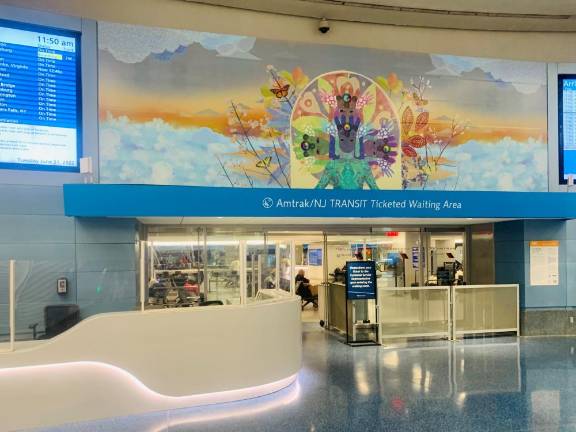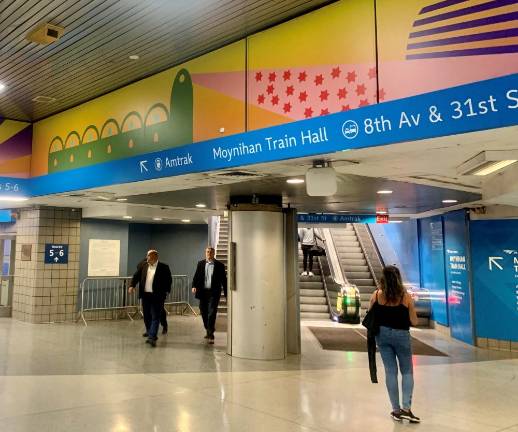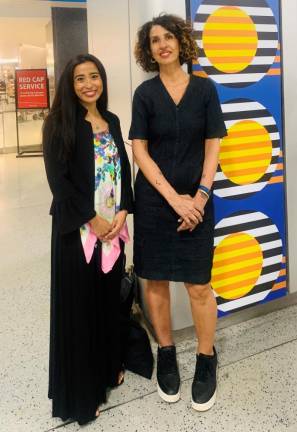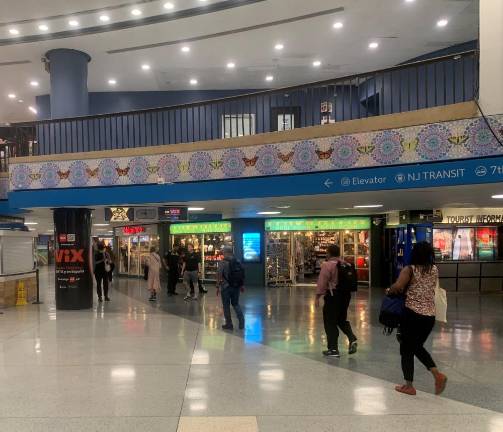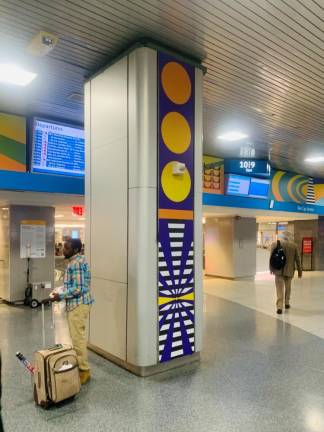The Art of Penn Station
A new program commissions installations by regional artists — a welcome change for traveling New Yorkers
When you pass through the main areas of the Upper Level at Penn Station, and look up, you will notice a change for the better.
With controversy raging over replacement proposals of the 1968 revamped shell of the original 1910 Pennsylvania Station, a new development there has calmed matters just a little – art. No, not the art in the new Moynihan Train Hall across the street, which is not owned by Amtrak, but art in Penn Station which is owned by the national rail carrier.
On May 20, Amtrak announced a program for regional artists commissions for site-specific installations at the station. While most of Amtrak passengers are using the Moynihan for their entry and exit, Penn Station is the only facility for NJ Transit. Many Long Island Rail Road riders continue to use Penn Station as well, although the Moynihan provides access for them as well.
The program provides for year-round public art from New York and New Jersey artists in the main upper hall and rotunda of Penn Station. The first two artists, Dahlia Elsayed and Saya Woolfalk, will have their works on display until the middle of September, when new works by others will be displayed. Art at Amtrak, as the program will now be known as, is part of capital improvements at Penn Station, and is the pilot project for the program, which may go on to other Amtrak-owned stations throughout the United States.
This program will be funded by Amtrak.
Amtrak has engaged locally-based Debra Simon Art Consulting to curate the art in their respective spaces for the current showings and successive ones. Simon has had a career in public art placement, previously as director of Public Art at the Times Square Alliance, and she created Arts Brookfield, the largest privately funded public art program in the United States.
Elsayed’s vibrant work, “Parallel Incantations,” surrounds a Penn Station waiting area with an illusion of infinite space. It pulls inspiration from ancient Egyptian temples and Islamic architecture, transforming the space with suggestions of expansiveness, air, and ambient light. A visit to Egypt, her ancestral home, last winter gave her the idea for the installation.
Landscape Pilgrimages
The ten 20-foot high columns that support the station under Madison Square Garden reminded her of the temples of Egypt, and were decorated in designs both exotic and understandable. The wraparound panels that cover the walls lining the upper level hall were originally battleship grey when the station was reconstructed in the late 1960s. That prominent color, then inundated with bright advertising and signage, gave the busiest Western Hemisphere transportation terminal the aura of a prison. Now, with Elsayed’s work, almost 530 feet in length, the upper wall is saturated with yellows, golds, reds, blues and greens to refresh and calm. The artist explained that they were landscape pilgrimages, both emotional and spiritual, to her a kind of visual poem.
For artist Saya Woolfalk, her temple was one of nature in an immersive environment. Her digital collages use forms and patterns of medicinal plants in both New York and New Jersey, embracing Hudson River School artists’ local landscapes as they were in the 19th century.
You can feel the pastoral against the daily tumult. Woolfalk researched the butterflies and plants represented in the collages from the archives at the Newark Museum. The figures visible in these paintings are half-woman, half-plant, adding to the natural settings. In the rotunda on the upper level, are four round high columns, each painted in calming pastels with leaves and butterflies. You could almost hear birds chirping.
With this new art addition, Penn Station has become the end of a West Side walking art trail, from the Guggenheim to the High Line, then the Moynihan and Penn Station, each worth pondering.
If you are waiting for the 5:06 train to take you where you need to be, a little Zen in your travel will go a very long way, thanks to this new program. And, if you aren’t, the newest art gallery in town is open 24/7 for residents as well as visitors for viewing.
